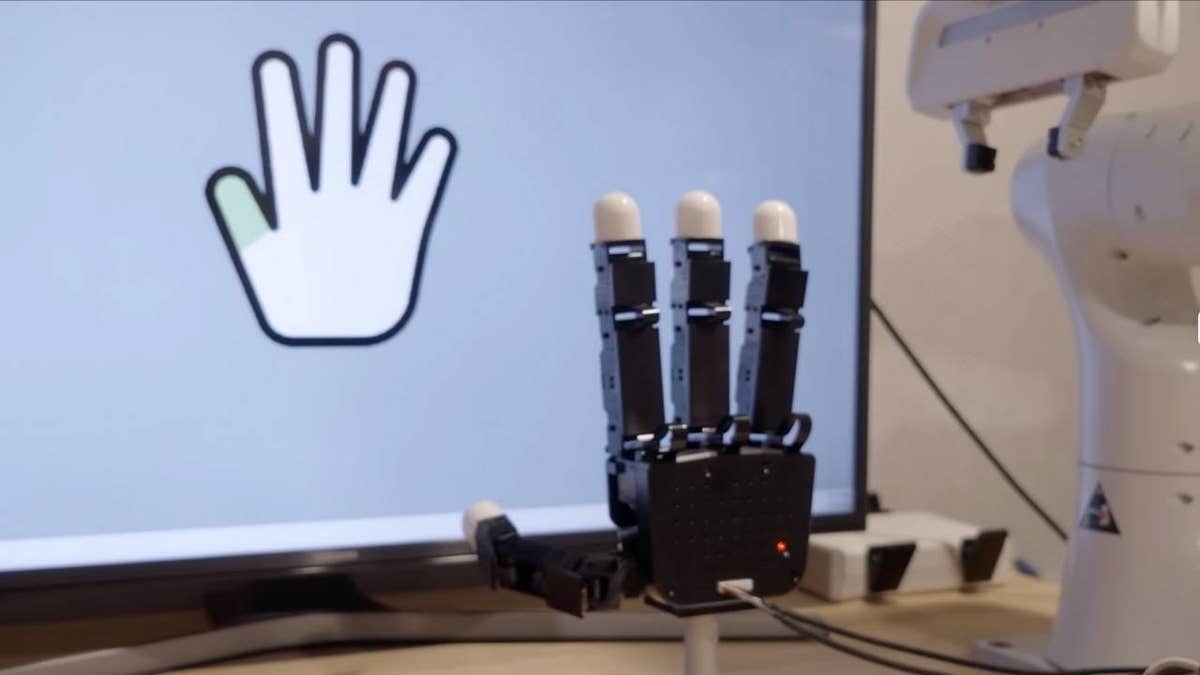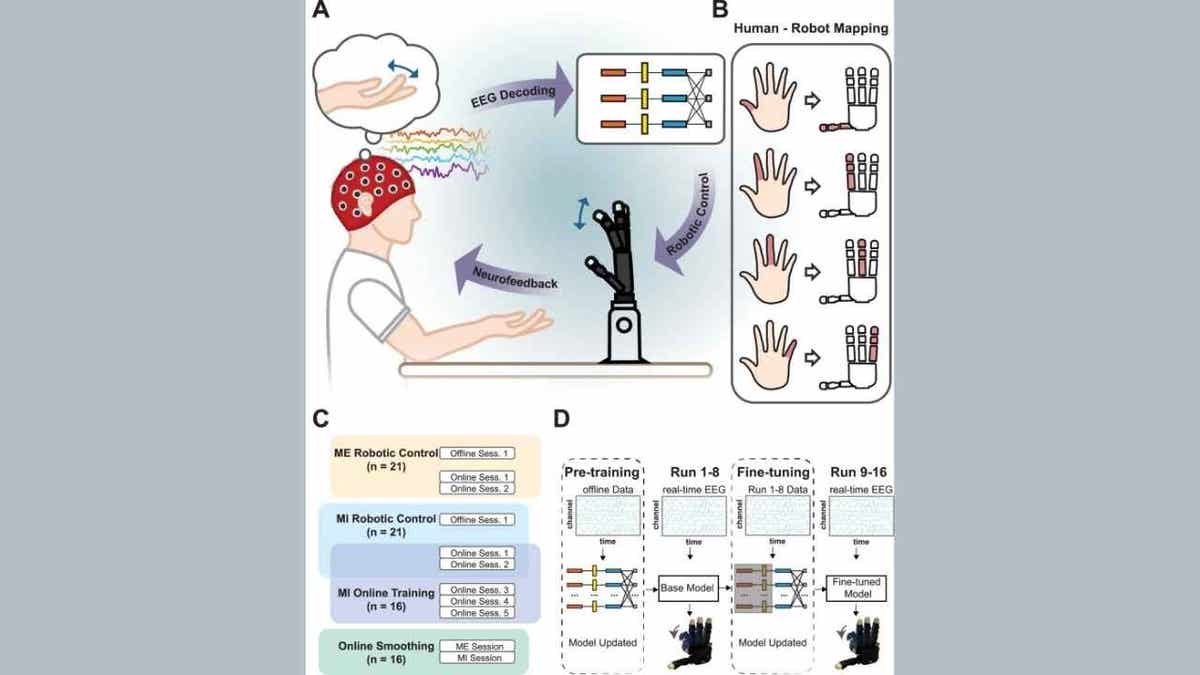Technology
Cloned on Facebook? Here's how to take back control

If you could get a penny for every new scam online, you’d be on your way to becoming rich.
If you got a penny for every person who has had their account hacked on Facebook, you’d be doubly rich. Not only do you have to contend with hackers hijacking your accounts or selling your information on the dark web, but now?
Hackers are skipping the attempts to infiltrate your accounts and are cloning Facebook accounts.
GET SECURITY ALERTS, EXPERT TIPS – SIGN UP FOR KURT’S NEWSLETTER – THE CYBERGUY REPORT HERE
Facebook app on a smartphone (Kurt “CyberGuy” Knutsson)
What is Facebook cloning?
Now hackers are using your photos, name and information to create new Facebook profiles. Once these fake duplicate profiles are created, they reach out to your friends and family to ask them to accept the friend request. Once accepted, they usually message friends and family for monetary assistance due to some bogus and urgent scenario.
What hackers commonly ask for with a cloned account:
- Money
- Additional personal information
- Password and login information
- Redirecting unsuspecting people to spam and scam websites
Yes, it seems unlikely that anyone would be duped so easily. Yet many people do get fooled. Most people also don’t hesitate to accept friend requests from people they think they already know. Due to their concern for their friend or family member, many rush in an effort to help someone they know with resources, access or information.
BEST ANTIVIRUS FOR MAC, PC, IPHONES AND ANDROIDS – CYBERGUY PICKS
What to do if your Facebook account has been cloned?
While not as complicated as having your Facebook account hacked, below are steps to take if your account has been cloned to minimize consequences.
1. Notify friends and family immediately that your account has been cloned and to not accept new friend requests from this account
2. Get as many friends and family to report the cloned account as possible.
Below are steps to take to report these cloned accounts:
- On the cloned account’s profile, click the three dots under the profile banner
CLICK HERE FOR MORE U.S. NEWS

Steps to take to report cloned accounts (Kurt “CyberGuy” Knutsson)
- Select ‘Report Profile’ in the drop-down menu
- Select ‘Fake account’ as the problem in the next drop-down menu

Steps to take to report cloned accounts (Kurt “CyberGuy” Knutsson)
If you successfully reported the cloned profile, you should get a confirmation message showing the progress of the review of the account.
3. If your account is cloned, it doesn’t necessarily mean it is hacked. So, check your settings to determine if anyone has access to your account before taking more stringent measures. To take more specific steps to secure your Facebook account from being hacked, follow the steps in 5 ways to make your Facebook account bulletproof.
HERE’S WHAT RUTHLESS HACKERS STOLE FROM 110 MILLION AT&T CUSTOMERS
How to prevent Facebook cloning?
While it is difficult to prevent someone from cloning your Facebook account, there are some steps you can take to make it more difficult.
1. First, you can check if this is already happening by entering your name in the search bar on Facebook. While there may be multiple users with the same name, cloned accounts are usually identifiable because they try to use your photo to dupe your friends and family.
2. Make your Friend List private so no one can access it. This will make it harder for people, even in your network, to know who to contact with these cloned accounts.
3. Change your privacy settings for photos, videos and information you post so people can’t use your photos and info to create profiles. Anything set to “public” is fair game to be used by these hackers to include in their cloned accounts.
THE DARK WORLD OF FACEBOOK ADS WHERE SCAMMERS ARE TRYING TO STEAL YOUR MONEY
Kurt’s key takeaways
As long as social media exists, there will be bad actors working every possible angle to take advantage of people and their networks. Aside from following best practices in keeping your accounts secure, it is now important to keep your personal information and media private. With hackers now cloning Facebook accounts, you might not even know about such an account until a friend or family member alerts you. With clear communication with your social networks on Facebook and enlisting their support to report the fake account, you can take steps to secure your presence on Facebook. While there will inevitably be another scam on Facebook, we will keep you notified and on high alert so you can nip it in the bud.
Has anyone ever cloned your Facebook account? Have you received a friend request from a cloned account? Let us know by writing us at Cyberguy.com/Contact
For more of my tech tips and security alerts, subscribe to my free CyberGuy Report Newsletter by heading to Cyberguy.com/Newsletter
Ask Kurt a question or let us know what stories you’d like us to cover
Follow Kurt on his social channels
Answers to the most asked CyberGuy questions:
Copyright 2024 CyberGuy.com. All rights reserved.

Technology
Here are 58 Prime Day deals you can still nab for $50 or less

Amazon Prime Day is an excellent time to save on a wide range of big-ticket items, including 4K TVs, laptops, and the latest pairs of noise-canceling headphones. But if you, like me, are in the market for something more budget-friendly, rest assured that there are plenty of deals to be had for $50 or less. Thankfully, we’ve sifted through hundreds of discounts to find a host of Bluetooth speakers, charging accessories, video games, smart home devices, and other gadgets that come in under that threshold. It’s the final day of Prime Day, which means these deals aren’t going to be available for much longer.
While Prime Day 2025 runs a little longer than previous installments — the event lasts through July 11th this year — these sub-$50 deals might sell out quickly. The good news is retailers such as Walmart and Best Buy are matching Amazon’s pricing in some instances, giving you more places to shop over the next few days. We’ll continue to update this post as Prime Day progresses, but for now, feel free to browse the options below.
Headphone and earbud deals
Other miscellaneous deals
Update, July 11th: Adjusted to reflect current pricing and availability, and to provide a link for readers to our coverage of Prime Day day four.
Technology
Noninvasive brain tech and AI moves robotic hand with thought

NEWYou can now listen to Fox News articles!
Noninvasive brain tech is transforming how people interact with robotic devices. Instead of relying on muscle movement, this technology allows a person to control a robotic hand by simply thinking about moving his fingers.
No surgery is required.
Instead, a set of sensors is placed on the scalp to detect brain signals. These signals are then sent to a computer. As a result, this approach is safe and accessible. It opens new possibilities for people with motor impairments or those recovering from injuries.
Sign up for my FREE CyberGuy Report
Get my best tech tips, urgent security alerts and exclusive deals delivered straight to your inbox. Plus, you’ll get instant access to my Ultimate Scam Survival Guide — free when you join my CYBERGUY.COM/NEWSLETTER
PARALYZED MAN SPEAKS AND SINGS WITH AI BRAIN-COMPUTER INTERFACE
A woman wearing non-invasive brain technology (Carnegie Mellon University)
How noninvasive brain tech turns thought into action
Researchers at Carnegie Mellon University have made significant progress with noninvasive brain technology. They use electroencephalography (EEG) to detect the brain’s electrical activity when someone thinks about moving a finger. Artificial intelligence, specifically deep learning algorithms, then decodes these signals and translates them into commands for a robotic hand. In their study, participants managed to move two or even three robotic fingers at once, just by imagining the motion. The system achieved over 80% accuracy for two-finger tasks. For three-finger tasks, accuracy was over 60%. All of this happened in real time.
WHAT IS ARTIFICIAL INTELLIGENCE (AI)?
Meeting the challenge of finger-level control
Achieving separate movement for each robotic finger is a real challenge. The brain areas responsible for finger movement are small. Their signals often overlap, which makes it hard to distinguish between them. However, advances in noninvasive brain technology and deep learning have made it possible to pick up on these subtle differences.
The research team used a neural network called EEGNet. They fine-tuned it for each participant. Because of this, the system allowed for smooth, natural control of the robotic fingers. The movements closely matched how a real hand works.

A robotic finger being controlled by non-invasive brain technology (Kurt “CyberGuy” Knutsson)
Why noninvasive brain tech matters for everyday life
For people with limited hand function, even small improvements can make a huge difference. Noninvasive brain technology eliminates the need for surgery because the system is external and easy to use. In addition, this technology provides natural and intuitive control. It enables a person to move a robotic hand by simply thinking about the corresponding finger movements.
The accessibility of noninvasive brain technology means it can be used in clinics and homes and by a wide range of people. For example, it enables participation in everyday tasks, such as typing or picking up small objects that might otherwise be difficult or impossible to perform. This approach can benefit stroke survivors and people with spinal cord injuries. It can also help anyone interested in enhancing their abilities.
What’s next for noninvasive brain tech?
While the progress is exciting, there are still challenges ahead. Noninvasive brain technology needs to improve even further at filtering out noise and adapting to individual differences. However, with ongoing advances in deep learning and sensor technology, these systems are becoming more reliable and easier to use. Researchers are already working to expand the technology for more complex tasks.
As a result, assistive robotics could soon become a part of more homes and workplaces.

Illustration of how the noninvasive brain technology works (Carnegie Mellon University)
Kurt’s key takeaways
Noninvasive brain technology is opening up possibilities that once seemed out of reach. The idea of moving a robotic hand just by thinking about it could make daily life easier and more independent for many people. As researchers continue to improve these systems, it will be interesting to see how this technology shapes the way we interact with the world around us.
If you had the chance to control a robotic hand with your thoughts, what would you want to try first? Let us know by writing us at Cyberguy.com/Contact
Sign up for my FREE CyberGuy Report
Get my best tech tips, urgent security alerts and exclusive deals delivered straight to your inbox. Plus, you’ll get instant access to my Ultimate Scam Survival Guide — free when you join my CYBERGUY.COM/NEWSLETTER
Copyright 2025 CyberGuy.com. All rights reserved.
Technology
YouTube’s ‘Trending’ section is about to disappear

YouTube is preparing to sunset the Trending section that shows users which videos are currently going viral on the platform. The Trending page and Trending Now list will be removed within the “next couple of weeks,” according to YouTube, with the platform instead shifting its attention toward expanding YouTube Charts that rank top-performing content.
YouTube is directing users to lean on personalized recommendations and YouTube Charts to explore new videos ahead of the Trending page removal. YouTube Charts allow users to see the most popular content for specific categories, which currently includes music videos, podcasts, and movie trailers. The platform says that it will add more content category charts “over time,” and that trending gaming videos can still be found under the Gaming Explore page in the meantime.
“Back when we first launched the Trending page in 2015, the answer to ‘what’s trending’ was a lot simpler to capture with a singular list of viral videos that everyone was talking about,” the company said in a blog post. “But today, trends consist of many videos created by many fandoms, and there are more micro-trends enjoyed by diverse communities than ever before.”
Viewers now learn about viral video trends from a variety of different sources, including Shorts, search suggestions, and other platforms like TikTok, which YouTube says has significantly reduced Trending page traffic, “especially over the last five years.” Creators have also criticized YouTube for demanding far higher viewership numbers to appear in the Trending section compared to branded accounts that post movie trailers, TV clips, and other traditional media, suggesting the experience doesn’t entirely reflect what videos are actually popular on the platform.
Creators who use the Trending page to research video ideas are being directed to instead use the Inspiration Tab in YouTube Studio, which provides AI-generated content suggestions. YouTube also says it’s working on new ways to help boost discovery for up-and-coming creators on the platform, such as the Hype promotional system it released last year that lets viewers amplify videos to a platform-wide leaderboard.
-

 Business1 week ago
Business1 week agoSee How Trump’s Big Bill Could Affect Your Taxes, Health Care and Other Finances
-

 Culture1 week ago
Culture1 week ago16 Mayors on What It’s Like to Run a U.S. City Now Under Trump
-

 Politics6 days ago
Politics6 days agoVideo: Trump Signs the ‘One Big Beautiful Bill’ Into Law
-

 Science1 week ago
Science1 week agoFederal contractors improperly dumped wildfire-related asbestos waste at L.A. area landfills
-

 News1 week ago
News1 week agoVideo: Who Loses in the Republican Policy Bill?
-

 Politics1 week ago
Politics1 week agoCongressman's last day in office revealed after vote on Trump's 'Big, Beautiful Bill'
-

 Technology1 week ago
Technology1 week agoMeet Soham Parekh, the engineer burning through tech by working at three to four startups simultaneously
-

 World6 days ago
World6 days agoRussia-Ukraine war: List of key events, day 1,227













